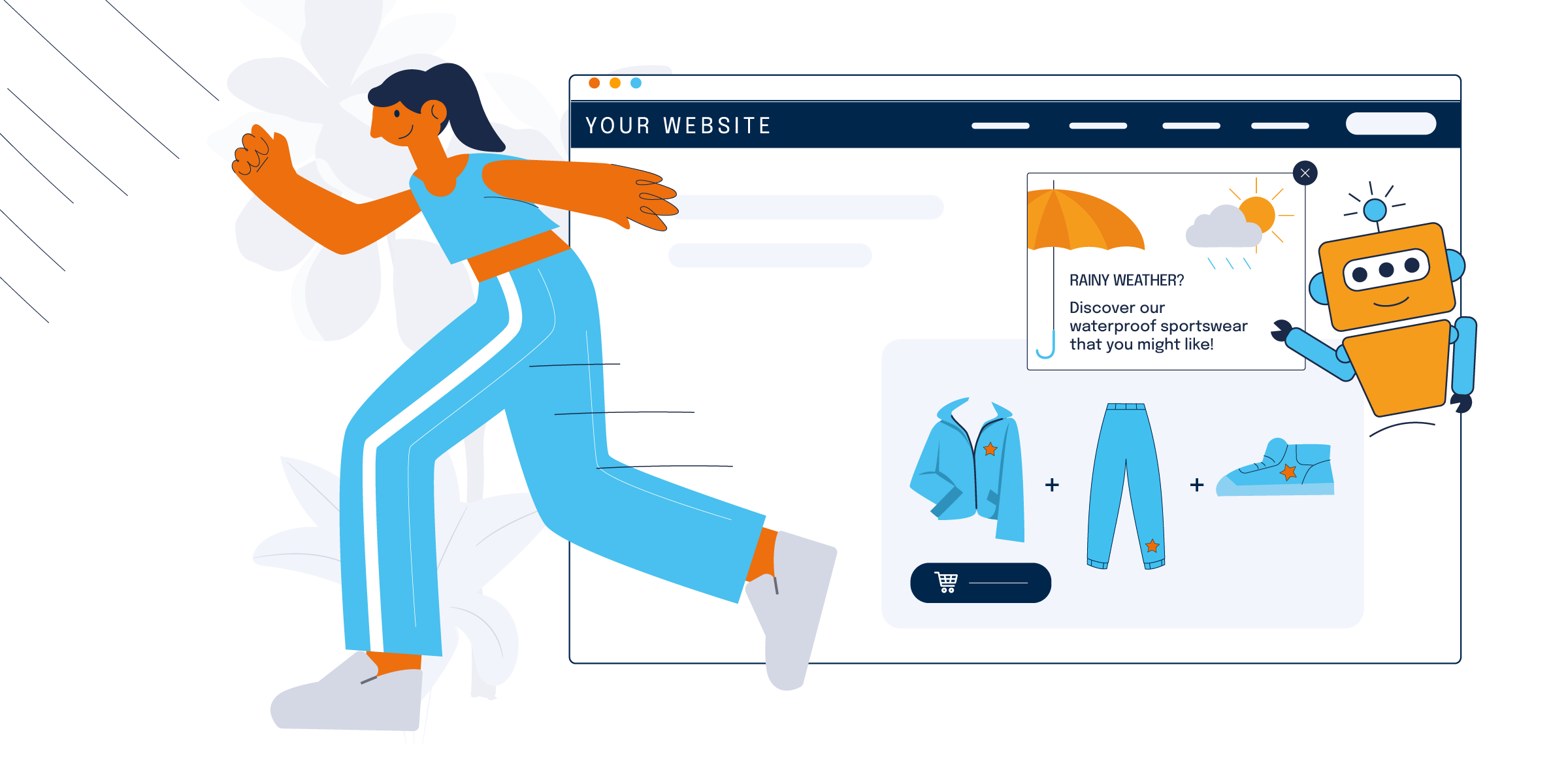From personalized product recommendations and customer service chatbots to dynamic pricing, intelligent logistics, and demand forecasting, AI is already powering many behind-the-scenes processes in e-commerce. But this is just the beginning.
According to a McKinsey study, 50% of companies are already using AI in at least one business function – particularly in product development and service operations. Even more striking, 22% of these companies attribute more than 5% of their EBIT directly to AI. And that number is growing.
As customer expectations rise, attention spans shrink, and operational costs increase, one thing is clear: brands that don’t personalize will lose. So the real question isn’t if AI will reshape digital commerce, it’s how much. And those who understand where the journey is going now will be able to optimize with foresight, not just react.
What is AI – and Why Does It Matter?
Artificial intelligence refers to technologies that simulate human-like thinking: learning, reasoning, understanding, and decision-making.
In e-commerce, AI makes it possible to analyze large amounts of user data to identify patterns and make fast, data-driven decisions. The goal? To deliver more relevant user experiences, streamline processes, and significantly improve the customer journey.
There are two main types of AI to know about:
- Analytical AI: Detects patterns and makes predictions.
- Generative AI (GenAI): Produces content and makes independent decisions based on context – e.g. ChatGPT or DALL-E.
What AI Can Already Do
AI is already at work in many online shops, often without users even noticing. Typical use cases include
- Personalized product recommendations
- Dynamic homepage content and teaser banners
- Customer service chatbots
- A/B and multi-armed bandit testing for optimization
- AI-powered search & filtering
- Dynamic pricing logic
- Inventory and repurchase forecasting
These tools improve usability, increase relevance, and deliver measurable results. But we’ve only scratched the surface.
What’s Next for AI in E-Commerce?
1. Real-Time Hyper-Personalization
AI won’t just know what customers need – it will begin to understand why. It will analyze context, emotion, and intent.
Example: trbo recognizes that a user is browsing in a hurry based on scrolling, device type, and time of day. So you decide to skip the full catalog and instead show a quick product finder with three personalized suggestions.
2. Automated Content That Converts
Online shops can generate entire landing pages, product descriptions, and emails – all tailored to user segments, search behavior, or even the weather.
Example: An athletic apparel store generates a landing page for “female runners 50+,” including personalized product selection, tone of voice, and imagery based on the real-time weather in their region.
3. Smarter Pricing Strategies
AI analyzes demand, inventory, competition, and user behavior in real time, and dynamically adjusts prices to maximize conversions without hurting margins.
Example: A consumer electronics retailer drops the price of a TV model by 5% after many users browse but don’t convert – while also testing a bundle offer.
4. AI-Powered Logistics
Beyond the storefront, AI enhances back-end operations such as forecasting, replenishment, and returns – improving availability and reducing delivery times.
Example: AI recognizes that a popular item sells best on Sundays and automatically restocks it on Saturdays. At the same time, it analyzes return reasons and updates product descriptions to reduce future returns.
5. Voice Commerce & Smart Interfaces
Voice assistants and multimodal interfaces (e.g., image + voice + text) will change the way users interact with brands, making the experience more conversational and intuitive.
Example: A user asks Alexa, “What goes well with my last order?” and receives a curated bundle recommendation – plus a link to buy directly.
6. Proactive Customer Journeys
Instead of guiding users through static pages, AI dynamically shapes the experience based on how they browse, click, pause, or hesitate. Every action becomes a signal.
Example: A user clicks on a jacket, pauses, then navigates back. The system detects uncertainty and displays an “Need inspiration?” overlay – with a lookbook of outfits styled around the same jacket.
How trbo Supports the AI Future
At trbo, AI is already embedded in many of our key features – and we’re constantly pushing the envelope.
- trbo Personalize analyzes behavior, intent, and patterns to deliver personalized content, recommendations, or layers in real-time.
- trbo Search automatically adapts to click behavior, search history and device type – for faster, more accurate product discovery.
- trbo Advise & trbo Chat provide interactive guidance through smart product advisors, AI-powered chatbots, and GenAI content suggestions.
- trbo Bundle creates dynamic product sets based on interest, purchase history and context – ideal for inspiration and upselling.
- Testing & Optimization enables agile, data-driven learning with A/B, multivariant and MAB testing that continually refines the experience.
What You Can Do Right Now
Even if you’re not using AI to its full potential yet, you can lay the groundwork today:
- Build a strong data foundation: Get tracking, consent, and analytics in shape
- Scale personalization incrementally – with tools like trbo
- Think AI-ready: Make sure your tools, processes, and teams are set up to evolve
- Prioritize testing and learning: Data beats guesswork
- Stay curious: trbo is built to grow with you – ready for wherever AI goes next
AI Isn’t a Trend. It’s the New Normal.
Artificial intelligence isn’t just hype; it’s changing the rules of e-commerce. Brands that learn to use AI now will enjoy the benefits of smarter experiences, happier customers, and more efficient operations.
With trbo, you can integrate AI into your business one step at a time. This will not only optimize your business, but also future-proof it.
